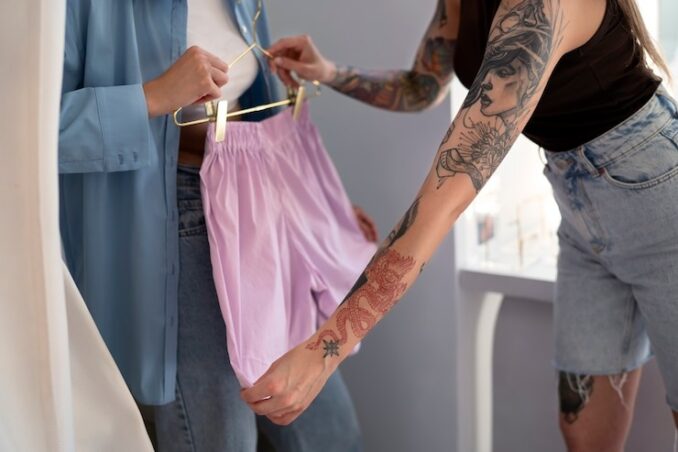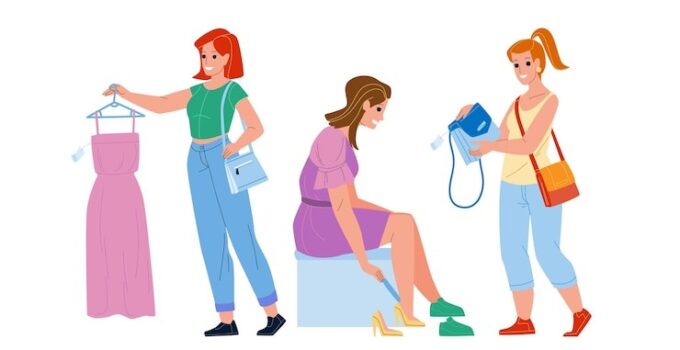Starting a merch line can feel overwhelming at first glance, but it really doesn’t have to be. I’ve seen so many creatives, artists, and small business owners get caught up in the endless “what ifs” of merch production when the truth is: simple steps work best.
In this article, I’ll walk you through the basics of getting your merch line off the ground without losing your mind—or your budget.
Key Highlights
- Focus on small, manageable product ranges at the start.
- Find reliable production partners that suit your style.
- Keep your brand identity clear and consistent across items.
- Choose designs that are affordable and easy to ship.
- Prioritize quality over quantity for better long-term success.
- Don’t overthink—launch, learn, and adjust as you grow.

Source: freepik.com
Start Small and Play to Your Strengths
One of the biggest mistakes I see new merch creators make is trying to do too much, too soon. You don’t need twenty product types and five color variations for each. Instead, think about what genuinely represents you or your brand.
Ask yourself: what do your followers, customers, or fans love most about your work? That’s where your first merch idea lives. Maybe it’s a particular design, phrase, or style that people associate with you. Keep your first collection simple—perhaps just one or two key items like a T-shirt or sticker set.
There’s also no need to create bulk inventory right away. Many production partners offer print-on-demand services, which let you sell items without holding stock or investing heavily upfront.
Choose Merch Items That Are Easy to Design and Ship
Merch doesn’t have to mean clothing or large, complex pieces. There’s a whole world of compact, fun, and highly customizable products that work beautifully, especially for smaller creators.
One of my absolute favorites is the acrylic standee. These little pieces are not only eye-catching and lightweight, but they’re also super easy to design around your art or logo.
Other simple ideas for your first merch line:
- Stickers (die-cut or holographic versions always stand out).
- Enamel pins (small but packed with personality).
- Keychains (these are always popular at conventions and online).
Keep shipping in mind—products that fit in small packages or envelopes will save you both money and hassle.
Find the Right Merch Production Partner
Now that you have an idea of what you want to make, let’s talk production. Choosing the right partner can make or break how smoothly your launch goes.
Look for suppliers who:
- Have clear pricing (no surprise fees for setup or shipping).
- Offer low minimum order quantities or print-on-demand services.
- Provide sample options so you can check quality before committing.
- Have reliable customer service—you want someone who’ll answer your emails when something goes wrong.
A tip from experience: don’t just compare price. Balance cost with quality and service, because the cheapest option might end up causing you the most stress down the line.
Design With Purpose, Not Perfection
It’s easy to fall into the trap of trying to make your first merch line perfect. But here’s the truth—your fans or customers aren’t expecting perfection. They’re supporting you because they love what you do. Your designs should feel authentic, not forced.
Focus on clean, simple graphics that translate well onto your chosen products. Think bold lines, limited colors (especially if you’re trying to keep printing costs down), and a design that still looks good even at a smaller size.
If you’re not confident in your design skills, consider collaborating with a freelance artist. Sites like Fiverr or Upwork are full of creatives who can help you turn your ideas into production-ready files without breaking the bank.
Price Smart—And Don’t Undervalue Your Work
Pricing can feel like one of the trickiest parts of launching merch. You want your items to be affordable, but you also need to make a profit. Here’s a simple way to start:
- Calculate the full cost per item (including production, packaging, and shipping materials).
- Add a reasonable profit margin—don’t be afraid to charge what your work is worth.
- Check what similar creators charge, but don’t feel pressured to undercut just to compete.
Your fans aren’t just buying a keychain or a shirt—they’re supporting you. That’s worth something.
Get the Word Out Without Feeling Pushy
Once your products are ready, you need to let people know! The good news is, you don’t need a huge marketing budget to start.
Here are a few friendly and natural ways to promote your merch:
- Share behind-the-scenes content on your socials—people love seeing how their favorite items are made.
- Offer a small launch discount or a freebie for first-time buyers.
- Create posts that highlight customer photos or reviews once orders start going out.
The key is to keep it personal and fun. If you’re excited about your merch, your audience will feel that too.

Source: freepik.com
Learn and Adjust as You Go
Your first merch launch doesn’t need to be the final word on your product line. Think of it as your starting point—a chance to see what works, what sells, and what you enjoy creating.
After you’ve sold a few items, take some time to review:
- Which products were most popular?
- Were there any production or shipping issues?
- What feedback did you get from customers?
Use what you learn to tweak your next round of products, improve your designs, or refine your shipping process. Merch is a journey, not a one-time event.
Final thoughts
Launching a merch line really doesn’t have to be overwhelming. When you start small, stay true to your style, and focus on simple, manageable products, everything becomes so much easier. The key is to take that first step without overthinking it.
Your fans will appreciate the effort and heart you put into your items far more than perfect designs or massive collections. So pick your favorite product idea, partner with a reliable producer, and enjoy the process—you’ll learn and grow as you go.





